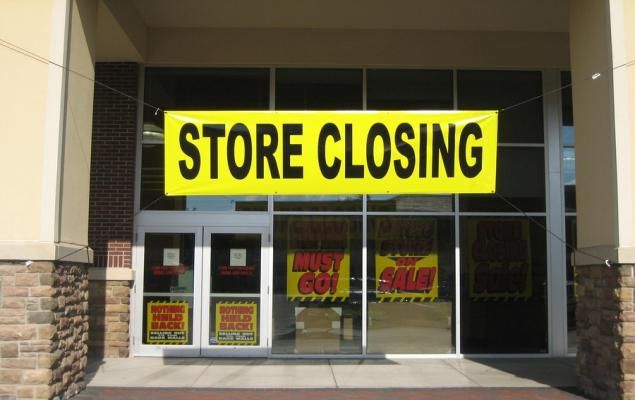
In the last decade, online shopping has soared to great heights with customers increasingly facing time crunch. Rise in e-commerce, on the other hand, led many brick-and-mortar retailers to bankruptcy and resulted in closure of stores globally as foot traffic decreased drastically leaving storekeepers worried.
The latest concept of zero-inventory showrooms, however, appears to benefit traditional retailers as of now. Here’s how –
<p class="canvas-atom canvas-text Mb(1.0em) Mb(0)–sm Mt(0.8em)–sm" type="text" content="The Retail Apocalypse ” data-reactid=”20″>The Retail Apocalypse
Generation Z, which at one time was attracted toward the bright yellow-colored bag of Forever 21, has now pushed the company to file Chapter 11, bankruptcy protection on Sep 29.
This 35-year old brand has more than 800 stores across the United States, Mexico, Europe, Asia and South America. But the dip in foot traffic to malls and brick-and-mortar stores has accounted to an estimated liability on a consolidated basis of between $1 billion and $10 billion for Forever 21.
Bankruptcy protection filing has exposed it to $275 million in financing from lenders with JPMorgan Chase & Co. and $75 million in new capital from TPG Sixth Street Partners and its affiliated funds. It will also close around 178 stores.
But brick-and-mortar stores filing for bankruptcy protection is nothing uncommon in the last five years. Several other brands like The Wet Seal, American Apparel and Delia have filed for bankruptcy and closed their stores 2014 onward and brands like Charlotte Russe had to do the same this year.
Rise in online shopping has not only clouded the existence of brick-and-mortar stores but also brought a sign of tautness for U.S. mall owners. This apocalypse faced by brick-and-mortar stores has led to closure of 12,000 stores in the last two years and mall owners like Simon Property Group, Inc. SPG and Brookfield Property Partners L.P. BPY are bearing the burnt.
The rise in online apparel sales has been predominant in the last decade owing to advantages like multi-brand catalog, massive discount and time saving. But it does have problems in the form of material, color and size issue, accounting to huge return and exchange logistics cost. Even big brands like Amazon.com, Inc AMZN suffer a lot from apparels being returned.
It is no doubt difficult for brick-and-mortar retailers to interpret the rapid change in fashion and cope with the fast supply chain of online retailers. Hence, a huge pile of inventory and wide floor space with fewer footfall only become liabilities for stores. But a recent joint research by Idea Farm Ventures, The Wharton School and Harvard Business School seems to have drawn attention, giving a silver lining to the sad state of brick-and-mortar retail.
The concept of “Zero-Inventory” showrooms (ZIS) not only saves brick-and-mortar stores but also helps digital sellers to forge a connection with customers.
<p class="canvas-atom canvas-text Mb(1.0em) Mb(0)–sm Mt(0.8em)–sm" type="text" content="Zero-Inventory Showrooms – The Future of Shopping” data-reactid=”29″>Zero-Inventory Showrooms – The Future of Shopping
As the name suggests, these showrooms do not have an inventory, hence the cost of piling up unsold cloths is zero. This also allows store attendants to concentrate more on helping customers and removes the hassle of unpacking, arranging and refreshing inventories.
The showroom becomes a platform for customers to experience the product in terms of checking the material, color and fittings and receive order via e-commerce. Big-brand and core brick-and-mortar retailer Nordstrom, Inc. JWN has already adopted this concept in five of its local locations and benefited from it.
<p class="canvas-atom canvas-text Mb(1.0em) Mb(0)–sm Mt(0.8em)–sm" type="text" content="Nordstorm carries a Zacks Rank #3 (Hold). You can see the complete list of today’s Zacks #1 Rank stocks here.” data-reactid=”32″>Nordstorm carries a Zacks Rank #3 (Hold). You can see the complete list of today’s Zacks #1 Rank stocks here.
Several core online retailers have taken up this concept and saved logistic costs. Bonobos, Suitsupply, MM. LaFleur and Casper are a few brands that have already adopted the concept and are enjoying its perks.
Further, Idea Farm Ventures, The Wharton School and Harvard Business School’s research showed that ZIS is not only cost-effective for retailers, but also has increased “supercharged customers.” Customers place larger average order, make more return purchases, return fewer products and most importantly buy products across different categories even making purchases of expensive items.
<p class="canvas-atom canvas-text Mb(1.0em) Mb(0)–sm Mt(0.8em)–sm" type="text" content="Today’s Best Stocks from Zacks ” data-reactid=”35″>Today’s Best Stocks from Zacks
Would you like to see the updated picks from our best market-beating strategies? From 2017 through 2018, while the S&P 500 gained +15.8%, five of our screens returned +38.0%, +61.3%, +61.6%, +68.1%, and +98.3%.









